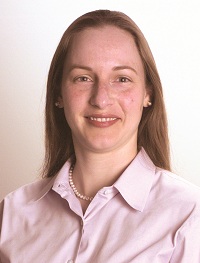As developers reach toward terahertz frequencies, it’s easy to underestimate the challenges that are likely to arise in design, simulation, measurement, and analysis. Compared to signals at baseband, RF or microwave, those in the millimeter-wave range behave quite differently. For example, at the wavelengths of 10 mm (30 GHz), 1 mm (300 GHz) or 0.3 mm (1 THz), propagation losses in the atmosphere are high, especially at the resonant frequencies of oxygen, water and carbon dioxide molecules. The differences also make it difficult to generate power, and it becomes increasingly challenging to make calibrated measurements and get useful results.
Engineers who are reaching into the millimeter range count on Keysight’s ability to stay just ahead of the leading edge, creating solutions that provide easier access to accurate, repeatable measurements at ever-higher frequencies and wider bandwidths. Keysight’s focus on the ongoing development of off-the-shelf tools for extremely high frequencies follows from the company’s proven blend of measurement science and millimeter-wave expertise. Enabling other industries to stay ahead of the curve is part of Keysight’s heritage—and its most recent introductions are helping developers succeed at 110 GHz and beyond
Innovating in technology and opening new doors

Millimeter-wave technology has actually been around for decades, primarily in aerospace, defense and backhaul applications where the benefits have justified the high costs of development, manufacturing and support. More recently, advancements in fabrication have been driving down the cost of extremely high frequency (EHF) devices, making them more accessible to commercial and consumer applications. For example, developers using complementary metal-oxide semiconductor (CMOS) technology have produced devices with fT greater than 500 GHz, and some are aiming to extend this cost-effective technology into the terahertz range.
As an innovator in its own right, Keysight has been pursuing groundbreaking R&D in EHF components. Its in-house capabilities in microwave semiconductor technology have enabled development of a next-generation indium phosphide (InP) process that supports transistor switching frequencies above 300 GHz. This makes it possible to achieve wider bandwidth in ICs and in products such as a recently announced oscilloscope that will deliver breakthroughs in real-time and equivalent-time performance.
Overcoming the obstacles and ensuring excellent measurements
Two key issues, guiding signals and generating power, are especially challenging in the creation of commercial, off-the-shelf test equipment that produces accurate, repeatable results. Waveguide is a crucial example: it must be as close to perfect as possible to ensure proper internal operation of any millimeter-wave instrument. Managing signals between 100 GHz to 1 THz requires use of different waveguide bands. At millimeter wavelengths, any skew in a flange connection can cause unwanted reflections that will degrade signal quality and reduce signal power.
Generating adequate power levels is a challenge because it is difficult to maintain amplifier efficiency and linearity simultaneously at these frequencies. This tends to limit the maximum power level that a signal generator or network analyzer can produce. Related to this, wider bandwidth is an alluring feature of millimeter-wave; however, a wideband measurement introduces more noise into the instrument and thereby raises the noise floor. The combination of lower maximum power and higher noise floor reduces the available dynamic range in wideband spectrum measurements.
Once these problems have been solved, the next big challenge is in calibration of both the instrument and the test setup. It is also difficult to accurately calibrate power levels at extremely high frequencies, but precise control of power is essential to ensuring measurement accuracy and avoiding damage to the device under test (DUT).
At these frequencies, measurements may seem to be part art and part science, and engineers may need to set aside old habits, take a more deliberate approach, and adjust their expectations. For example, it’s necessary to pay careful attention to every stage of a measurement setup—instruments, cables, and accessories. This means taking steps to ensure details such as pristine connections, clean up conversion of output signals, precise down conversion of incoming signals, low-level internal spurious signals, and well-managed internal harmonics. These factors are as important in spectrum and signal analysis as they are in network analysis and the characterization of passive (S-parameters) or active devices (X-parameters).
One more critical difference adds to the challenges: in some cases the connection between instrument and DUT must be made over the air (OTA) rather than through cables or waveguide. In an OTA situation, it is necessary to control and calibrate the radiated environment around the test setup. To ensure repeatable measurements, there must also be a way to consistently control or lock down any directional element in the DUT.
Building on a history of leadership
Most recently, in October 2016, Keysight launched the N9041B UXA X-Series signal analyzer, the first to provide continuous-sweep frequency coverage from 3 Hz to 110 GHz. Fully integrated instantaneous bandwidth is 1 GHz, and an IF output supports a maximum analysis bandwidth of 5 GHz when connected to an external Keysight oscilloscope. Advanced front-end circuitry achieves low loss and efficient mixing, providing a displayed average noise level (DANL) as low as –150 dBm/Hz when characterizing wideband modulated signals in the millimeter-wave band.
Keysight software products address the need to integrate design, simulation, measurement, and analysis at millimeter-wave frequencies. Software solutions for design and simulation provide an efficient workflow that accelerates development of next-generation devices and systems.








